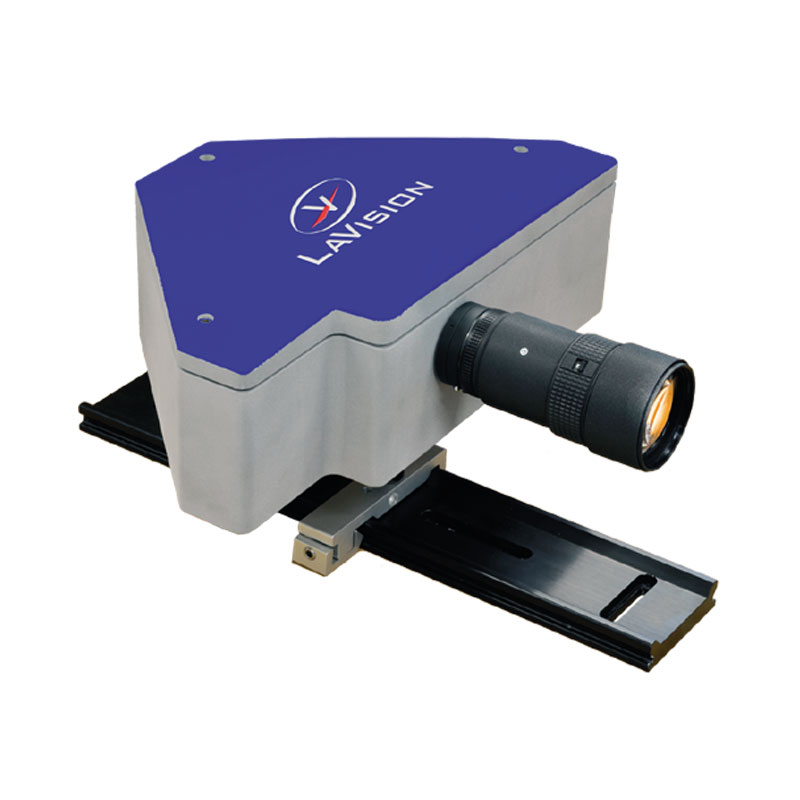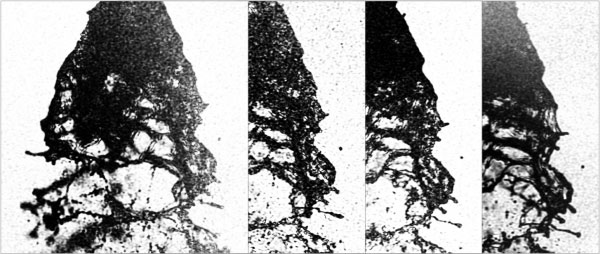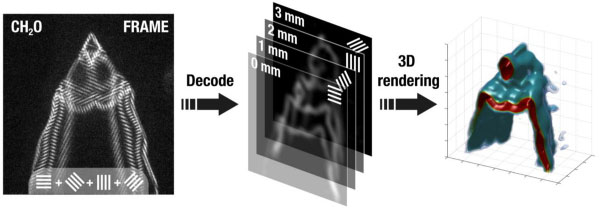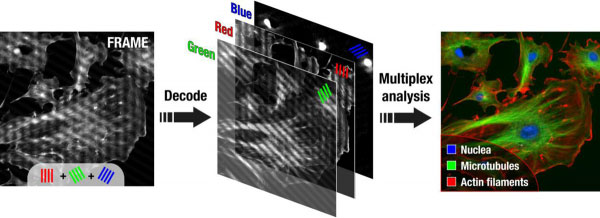
FRAME Imaging Technology
The FRAME imaging technology offers the unique ability to acquire and store multiple exposures in one frame of a standard camera sensor. This new Frequency Recognition Algorithm for Multiple Exposures (FRAME) imaging concept uses an image-coding strategy, where different exposures are given a unique structural code allowing multiple on-chip exposures before readout. At the end of such a superimposed recording each image is unlocked by its unique structural code. This on-chip recording of structural coded images opens up a variety of new measurement schemes such as
- Ultra-high-speed imaging
- Instantaneous 3-dimensional imaging
- Simultaneous, multispectral imaging
Ultra-high-speed imaging
Together with researchers from Lund University LaVision has developed a FRAME imaging setup for high speed shadow imaging. The FRAME illumination unit consists of 4 pulsed LEDs firing a sequence of 4 structural coded illuminations at a frequency of up to 1 MHz. A standard still camera captures on-chip all 4 exposures. After readout a post-processing procedure decodes the multi-exposure recording into the 4 time-separated snapshots.

High-speed spray shadowgraphy applying FRAME imaging technology

High-speed spray images reconstructed from one FRAME recording
The temporal resolution and frame rate of FRAME imaging are determined by the light source. Using e. g. femtosecond lasers in combination with a FRAME projector will permit video imaging at several trillion frames/s – using a single standard high resolution camera!
Instantaneous 3-dimensional imaging
Coded light sheets at different spatial locations are used in combination with FRAME imaging technology for 3D laser imaging of e. g. 3D concentration fields of LIF species in flames.

3D-LIF imaging applying FRAME technology / courtesy: Lund University
Simultaneous, multispectral imaging
Performing multispectral imaging with FRAME allows the simultaneous recording of images with different wavelength information. For example, species-specific LIF processes in biological samples can be recorded parallel in time for higher throughput screening.

FRAME for simultaneous multispectral imaging / courtesy: Lund University
Need Inquire ?
If you need more information or quotation about this product, Our sales representative will reply as soon as possible
